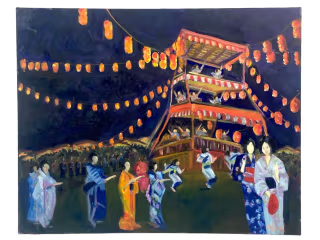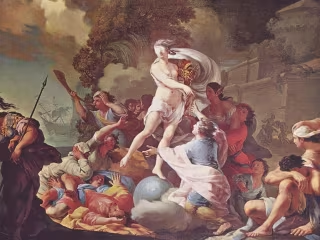Hel: Queen of Helheim and Goddess of Death
0
Ghostwriter
Blog Writer
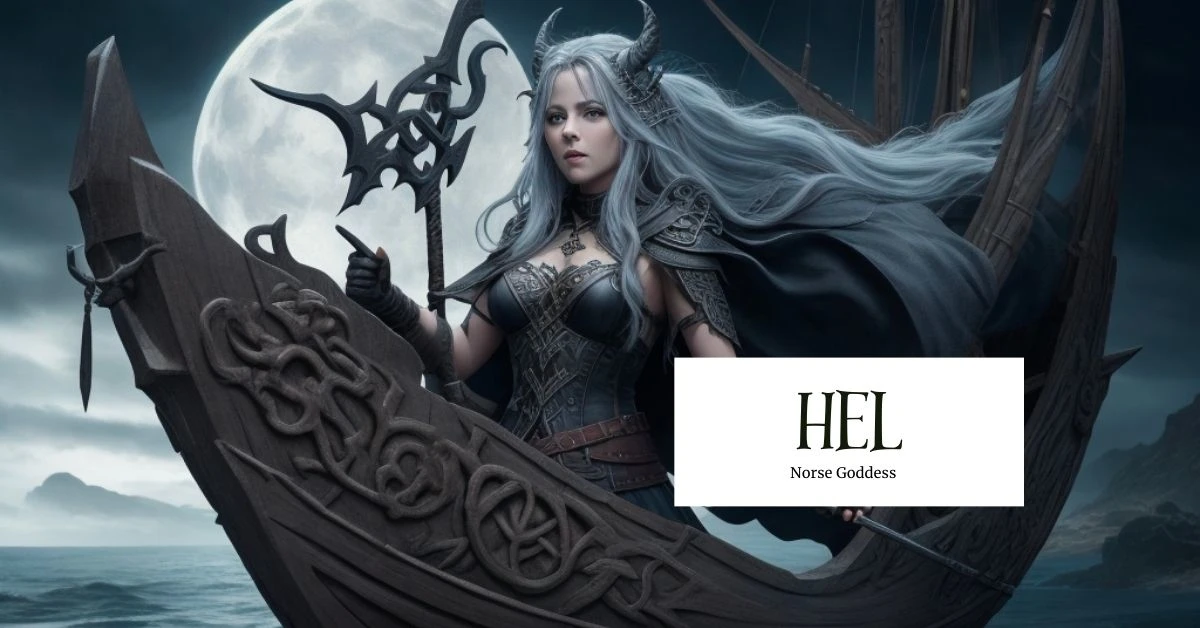
The goddess Hel, known for her enigmatic presence in the realm of the underworld, has long captured the imagination and interest of scholars and storytellers alike. Embodying the delicate balance between life and death, Hel has drawn the attention of generations and inspired contemplation and exploration into the realms of Norse belief and beyond. Hel’s dualistic nature, reigning over the ethereal kingdom of Helheim while being deeply enmeshed in the perpetual cycle of existence, is a constant reminder of the intricate balance that shapes the universe. Both ancient and contemporary observers are drawn into her captivating narrative, woven with threads of life and death, inviting us to unravel the enigma that is Hel.
Overview of Hel
The realm of the dead in Norse Mythology was originally called Hel, but over time, it became associated with the goddess of death who ruled over Helheim – the land of the deceased. Hel, also known as Hela or Hella, played an essential role in Norse mythology as the supreme ruler of the underworld (“Hel (Mythological Being)”). According to historical accounts, she was born from the unconventional union of the mischievous trickster god Loki and the mysterious giantess Angrboda. Her authority over the afterlife is not limited to governance but also symbolizes the cyclical nature of life and death intrinsic to the Norse cosmology (“Hel – New World Encyclopedia”). Hel embodies this profound cosmic rhythm, closely intertwined with mortal existence and divine eternity. Additionally, her dual heritage mirrors the inherent dualities of her realm – a place of refuge and comfort for some souls, while for others, it is a realm of darkness and isolation (McCoy).

Source: Rare HD Wallpapers
Titles
Mistress of the Underworld
Queen of Helheim
The Keeper of the Dead
Abilities
The influence of Hel extends far beyond the dichotomy of life and death, firmly establishing her as a linchpin in the delicate balance of the cosmos (“Hel”). As an arbiter of fate, Hel holds the power to shape the destinies of mortals, an authority that resonates even beyond the veil of death itself (Kabir).
At the core of her abilities lies the pivotal task of determining the ultimate afterlife destinations for souls. This prerogative highlights her role as a mediator between the realms, orchestrating the intricate transition dance from the mortal to the ethereal (“Hel (Mythological Being)”). Furthermore, Hel’s capabilities extend to the realm of healing. Her unique aptitude for restoration grants her the ability to resurrect those who have faced near-fatal injuries or illnesses, thus weaving threads of life into the tapestry of death (McCoy).
Hel’s dominion over the deceased grants her sovereignty and dynamic control over spirits. This dominion endows her with the power to command and guide these spectral entities (Kabir).
Characteristics
The visual representation of Hel’s existence is a remarkable embodiment of the complex dichotomy between life and death (“Hel (Mythological Being)”). Her form, as depicted throughout history, is sometimes a canvas richly painted with intricate detail, showing a body divided into two contrasting halves (Kabir). One side radiates an ethereal beauty akin to that of the gods, while the other is veiled in morbidity, mirroring the decay intrinsic to the afterlife (“Hel”). This visual duality encapsulates Hel’s pivotal role as an intermediary, poised between the animate and the deceased. However, several art pieces exclusively showcase Hel’s ethereal beauty, while others fully embrace her darker side. Nonetheless, both aspects of her persona are frequently portrayed in art.
As a reminder of her place within the intricate cosmic dance, Hel’s appearance embodies her profound purpose and unique heritage as a guiding force amid the ever-shifting tides of existence. Her physical portrayal is not simply an artistic choice but a reflection of her role as a bridge between the realms of the living and the dead (McCoy), a reminder of the delicate balance between life and death that underpins the fabric of the universe.
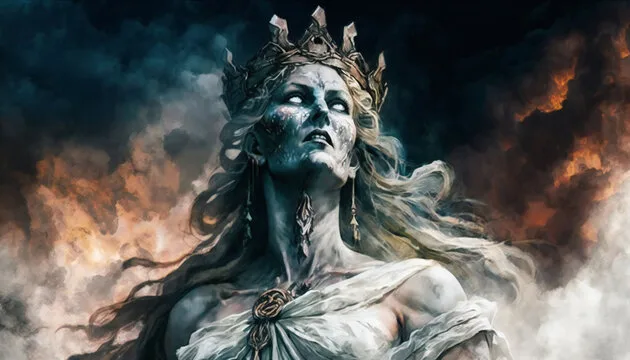
Source: Adobe Stock
Traits
The association of Hel’s realm with the departed may suggest a strict and unyielding demeanor. However, Hel’s character is considerably multi-dimensional and exhibits a broad range of emotions and qualities that closely mirror the complex nature of her lineage. Beneath her enigmatic exterior lies a heart that resonates with compassion and morality (“Hel (Mythological Being)”). As the ruler of the realm of the deceased, her judgments bear significant consequences for the fates of departed souls (Kabir). Hel’s innate empathy and understanding provide hope within her shadowy domain, reminding us that compassion and kindness can coexist alongside death (McCoy).
Symbols
The symbolism associated with Hel is deeply rooted in her integral role as a conduit between the realms, representing the transition from life to the afterlife. One of the most notable symbols linked to Hel’s power is the “Helm of Awe,” a complex emblem that exudes a sense of protection and strength (“Hel (Mythological Being)”). This icon is often associated with Hel’s dominion over the afterlife, highlighting her role as a guardian of souls during their final journey (“Hel – New World Encyclopedia”). Similarly, the “Hringhorni,” a ship that carries fallen warriors to the realm of the dead, is a potent symbol closely intertwined with Hel’s mythology (McCoy). This vessel embodies her authority over fate, guiding departed souls through the sea of transition with a steady hand (“Hel”).
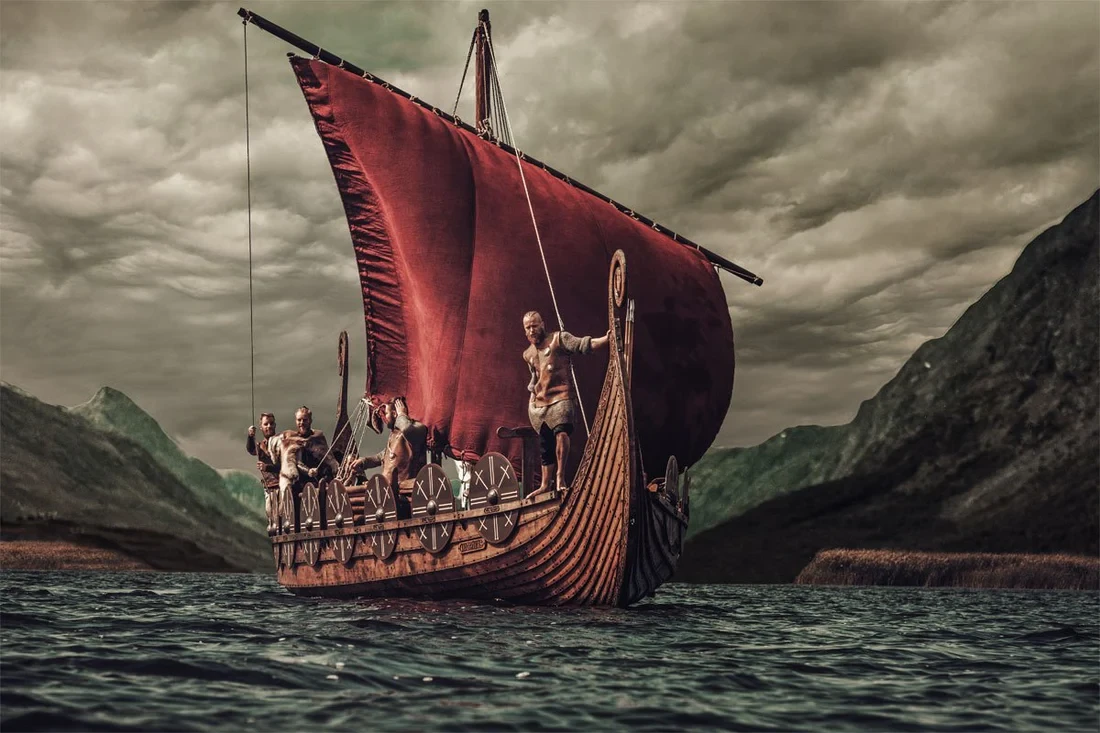
Source: Innovato Design
Festivals and Rituals
Hel’s influence on Norse belief systems, particularly in ancestral veneration, is a topic of ongoing scholarly debate. Despite the lack of direct evidence of exclusive celebrations dedicated solely to Hel, her enduring presence as a mediator between the living and the deceased is reflected in broader observances such as the Dísablót (Kabir), a communal practice aimed at honoring ancestral spirits and feminine powers. During this ritual, offerings were presented to female entities, including the enigmatic Hel, praying for their favor and safeguarding (“Hel (Mythological Being)”). This homage highlights the intertwined destinies of the living and the deceased within Norse belief systems, underscoring Hel’s integral role in the intricate dance of life and death (McCoy).
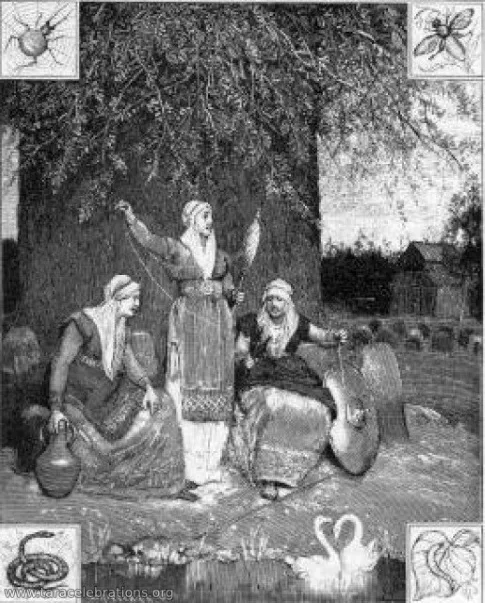
Source: Tara Celebrations
Legends associated with Hel
Amid the intricate weave of Norse mythology, the goddess Hel emerges as an enigmatic and influential figure. Delving into the legends surrounding her, we unearth her origin story and diverse narratives, unveiling facets of her captivating persona. These tales offer glimpses into the complexity that defines Hel, embodying both mystery and might within the rich tapestry of Norse lore.
Origin story
Following the Prose Edda by Snorri Sturluson, a notable source of Norse mythology, the origin of Hel can be traced back to the atypical union between Loki, the renowned trickster god, and Angrboda, a giantess with close associations to chaos and the untamed forces of nature (“Hel (Mythological Being)”).
The involvement of Loki in Hel’s conception adds a layer of intrigue to her lineage. Loki, known for his shape-shifting abilities and propensity for stirring up trouble, defies the norms of the divine pantheon through his relationship with Angrboda. This union reflects both Loki’s inclination towards chaos and the crossing of boundaries between gods and giants, as well as between divine and primal forces. Angrboda, whose name translates to “She Who Brings Grief,” is intertwined with the untamed aspects of nature. The association with chaos and wilderness emphasizes Hell’s lineage’s unconventional and boundary-breaking nature. The offspring of this union embodies a unique blend of divine and chaotic traits, symbolizing a bridge between worlds and an embodiment of the dualistic nature intrinsic to Norse mythology (Kabir).
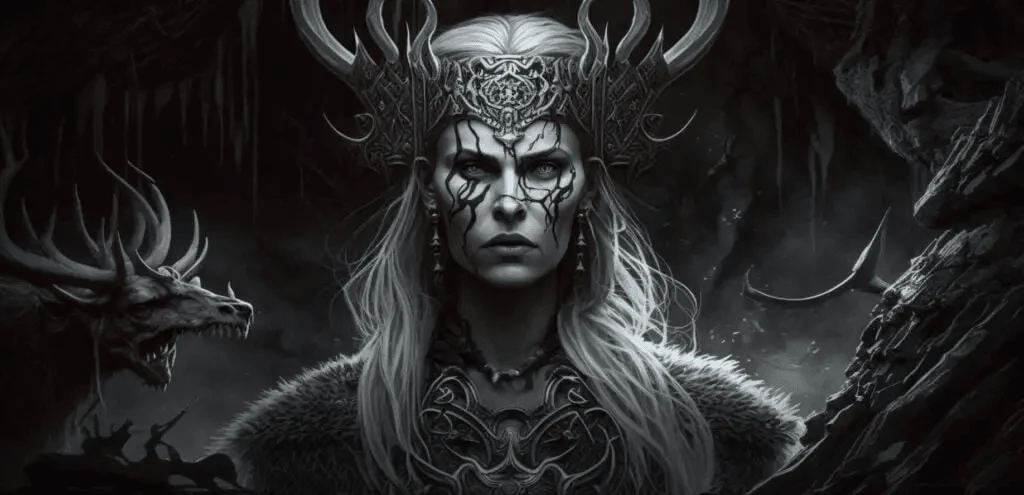
Source: Viking Style
The End and the Beginning: Hel’s Role in the Aftermath of Ragnarok
A great event known as Ragnarok marked the end of the world and the beginning of a new life cycle. This apocalyptic event brought about the total destruction of the cosmos, leaving only ashes and rubble in its wake. However, amidst the chaos and devastation, a figure emerged as a beacon of hope and renewal: Hel, the ruler of the realm of Helheim. As the final resting place for those who had passed away due to old age or illness, Helheim played a crucial role in the aftermath of Ragnarok. As its ruler, Hel was responsible for ensuring that the souls who did not meet their fate in battle found their rightful place in the afterlife (“Hel – New World Encyclopedia”). Her unwavering commitment to this task spoke to the enduring influence of her character on Norse belief systems.
Hel remained a central figure in this new life cycle as the world began to regenerate. Her role as a harbinger of cosmic change and renewal underscored the interconnectedness of all things, symbolizing the cyclical nature of existence. Hel’s significance as a guardian of souls and participant in the cosmic upheaval of Ragnarok was undeniable, as she embodied the bridge between life and death (“Hel (Mythological Being)”).

Source: Norse and Viking Mythology
Hel as mediator
In the annals of Norse mythology, few tales are more heart-wrenching than the saga of Baldr and his accidental demise at the hands of his own brother, Hodr. This tragic event set in motion a chain of events that thrust Hel, goddess of the underworld, into the forefront of the cosmic order (“Hel”). Baldr, known for his invulnerability, was granted this gift by a mother’s oath not to harm him. However, his vulnerability remained concealed from the gods, and Loki, the cunning trickster god, exploited this loophole, tricking Baldr’s blind brother into firing a mistletoe dart that pierced his heart, causing his death. The death of this radiant god plunged the cosmos into mourning, underscoring the profound impact of his demise.
Following Baldr’s untimely death, the gods sought to retrieve him from the realm of the dead, Helheim, ruled by the goddess Hel. This realm was a place of rest for those who did not die in battle, offering a peaceful afterlife. The gods sent emissaries, including Baldr’s mother, the goddess Frigg, and Hermóðr, to negotiate with Hel for Baldr’s return. Hel, embodying her role as the ruler of the afterlife, presented the gods with a condition: if all things wept for Baldr, he would be released from her realm. This condition underscored Hel’s power and connection to the cyclical nature of life and death. While most beings wept for Baldr, Loki, in yet another act of deceit, disguised himself as a jötunn woman named Thökk and refused to shed tears, thus preventing Baldr’s return. Baldr’s death and sojourn to Helheim revealed Hel’s position as a mediator between realms. Her realm became a place of solace and reprieve, even for revered gods like Baldr (“Hel – New World Encyclopedia”).
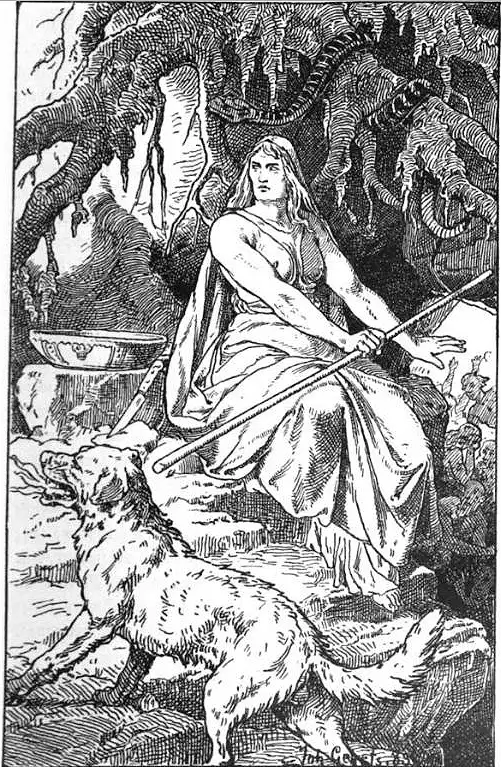
Source: Wikipedia
Influences of other religions/cultures on Hel
The enigmatic presence of Hel within Norse mythology extends beyond the confines of its cosmology, as her character bears subtle influences from diverse cultures and belief systems. Although firmly rooted in the Norse pantheon, Hel’s role as a deity overseeing the realm of the dead resonates with echoes from other mythologies. The motif of a divine ruler presiding over the afterlife is a universal theme that transcends cultural boundaries. Hel’s dominion over the deceased shares intriguing parallels with various underworld figures from different mythologies, such as Hades, the Greek god who holds authority over the realm of the dead in Greek mythology (Kabir). The resemblance in their roles underscores the timeless human fascination with the realm beyond mortal existence, illustrating the universality of themes surrounding death, rebirth, and the afterlife.
As the lines blur between cultural narratives, Hel’s character emerges as a testament to the interconnectedness of human mythmaking. The similarities between her and other underworld figures reflect the innate human yearning to comprehend the mysteries that lie beyond life’s horizon, a yearning that transcends geographical and cultural boundaries. Thus, Hel’s multifaceted character is a poignant reminder of the enduring curiosity and wonder that permeates human mythology.
Modern appearances
The legacy of Hel, a prominent figure in ancient Norse mythology, has transcended time and continues to resonate with modern sensibilities. Her enigmatic persona has seamlessly transitioned into various modern media outlets, leaving an indelible mark on literature, movies, and video games. Notably, Hel or Hela appears in the Marvel Cinematic Universe (MCU) films, particularly in the movie “Thor: Ragnarok.” In the MCU, Hela is portrayed as Thor’s older sister based on the Norse mythology figure Hel. Depicted as a powerful and formidable villain, Hela can control death and rule over the realm of the dead. The adaptation of her character in “Thor: Ragnarok” highlights her connection to the apocalyptic event of Ragnarok, a role that mirrors her significance in Norse mythology.
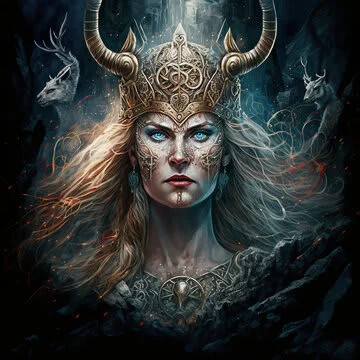
Source: Adobe Stock
Final thoughts
Hel, in all her complexity, varied legends, and cultural influences, serves as a testament to mythology’s intricate and interconnected nature. Her role as a bridge between life and death, her embodiment of duality, and her enduring impact on popular culture highlights her significance within the pantheon of Norse deities. As we navigate the rich tapestry of Norse mythology, the character of Hel serves as a reminder of humanity’s timeless fascination with the mysteries that exist beyond the mortal realm.
References
“Hel.” World History Encyclopedia, www.worldhistory.org/Hel/.
“Hel (Mythological Being).” Wikipedia, 21 Nov. 2022, en.wikipedia.org/wiki/Hel_(mythological_being).
“Hel – New World Encyclopedia.” Www.newworldencyclopedia.org, www.newworldencyclopedia.org/entry/Hel.
Kabir, Syed Rafid. “Hel: Norse Goddess of Death and the Underworld | History Cooperative.” History Cooperative, 12 Jan. 2023, historycooperative.org/hel-norse-goddess-of-death/.
McCoy, Daniel. “Hel (Goddess) – Norse Mythology for Smart People.” Norse Mythology for Smart People, 2012, norse-mythology.org/gods-and-creatures/giants/hel/.
Did we miss something? Do you know another aspect of this legend? Don't hesitate to reach out!
Like this project
0
A client hired me to write several informative pieces on Norse Goddesses, and this blog post centers around the Goddess of Death, Hel.
Likes
0
Views
109
Tags
Ghostwriter
Blog Writer



